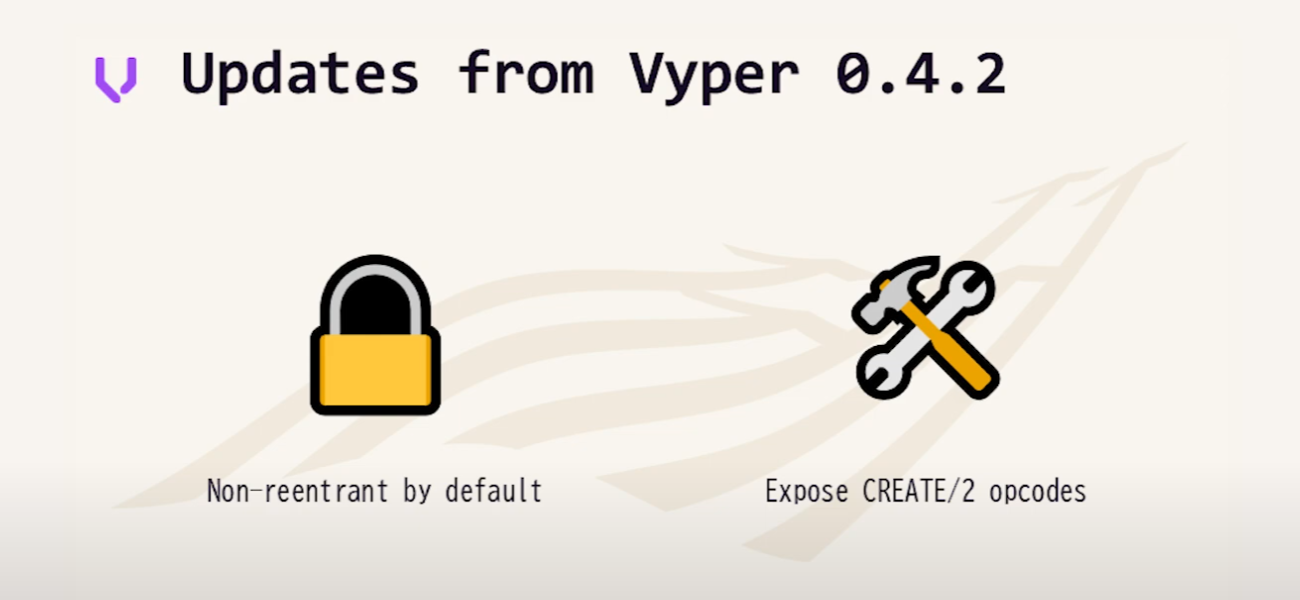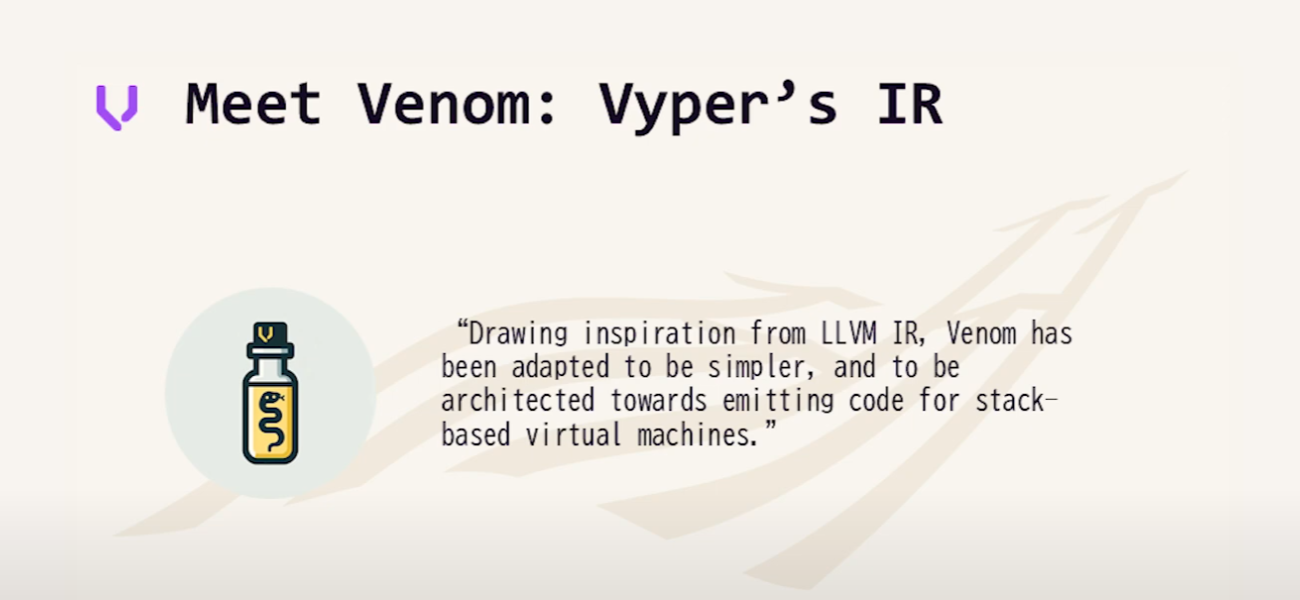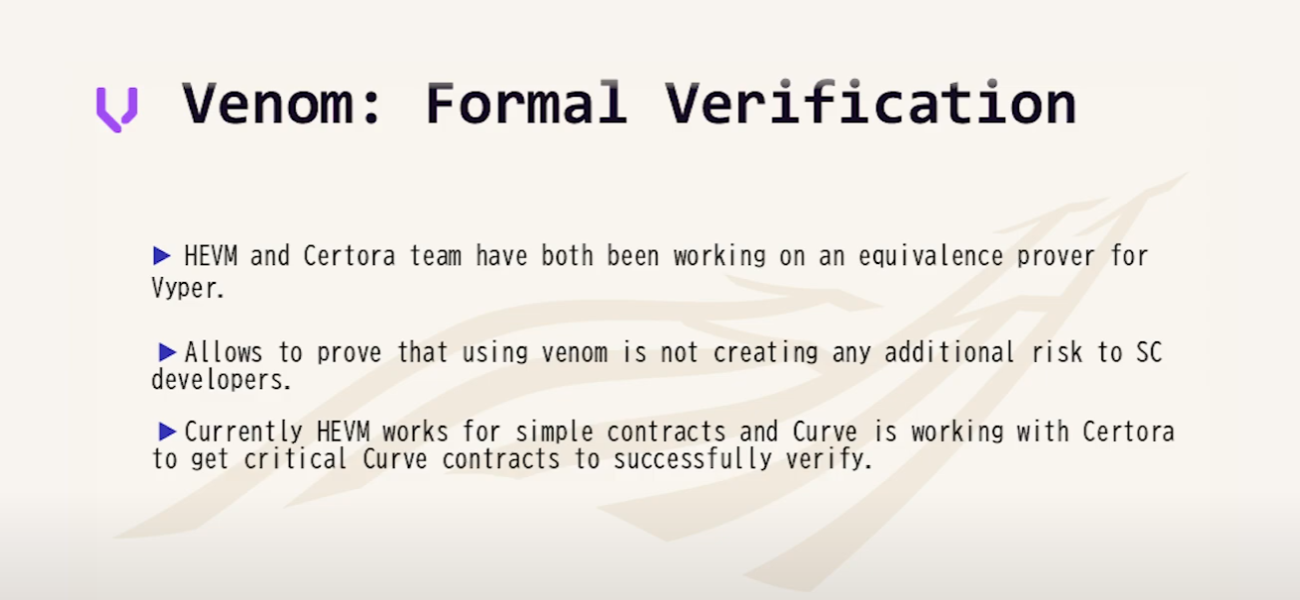State of Vyper & Curve Smart Contracts
Curve dev Alberto shares how Curve’s production needs have shaped Vyper, from non-reentrancy by default to new compiler tooling. A look at what’s improved, what’s next, and why Curve still builds in Vyper.

Why Curve Builds in Vyper
Solidity dominates the EVM landscape, but Curve has stayed committed to Vyper. Its Python-like syntax makes math-heavy contracts easier to read and audit, and the language’s strict design is optimized for safety and predictability.
Another practical advantage, both early on and still today, is that Vyper consistently produces leaner bytecode than Solidity. This has allowed Curve to fit complex contracts within the EVM’s 24 KB size limit (set by EIP-170) without having to split logic across multiple contracts.
Over time, Curve’s production use cases have helped shape Vyper’s development. Many features were added to meet specific needs around security, deployment patterns, and compiler reliability. Today, the language is more flexible, but still aligned with the values that led Curve to adopt it in the first place: clarity, simplicity, and security.
Recent Compiler Updates

- Reentrancy protection by default: Starting in Vyper 0.4.2, functions are non-reentrant unless explicitly marked. This protects against common attack vectors, including read-only reentrancy, which has affected Curve in the past.
- CREATE and CREATE2 support: Vyper now exposes these low-level opcodes cleanly, making factory-style deployments easier and safer.
- Snakepit: Developed together with ChainSecurity, this tool checks over 30,000 contracts in public repositories across 20+ chains for vulnerabilities. The compiler can then flag existing contracts that would be at-risk if issues are found in the future.
Optimizing Vyper with Venom: Vyper’s IR

A new intermediate representation called Venom, inspired by LLVM, is currently in development for the Vyper compiler. It enables automatic gas optimizations at compile time while keeping the source code clean and human-readable. While not yet production-ready, Venom is showing promising results. With formal verification tooling becoming more accessible, we’re getting closer to being able to use these optimizations safely in critical contracts.
In benchmarks, Venom-compiled Vyper contracts perform as well as or better than manually optimized Yul implementations. Developers get the performance of low-level code without sacrificing clarity.
Formal Verification and What's Next

Curve is working with Certora and HEVM to build formal verification tooling for Vyper. The goal is to prove that optimized and unoptimized versions of a contract behave identically, removing the usual trade-off between performance and safety.
In parallel, Verifereum is working toward a fully verified Vyper compiler, in collaboration with Ramana Kumar, one of the few researchers to have built a verified compiler before (CakeML). These projects approach formal verification from different angles but share a common goal of making Vyper safer for production use.
Other upcoming features:
- Runtime memory allocator for more dynamic use of memory
- Raw return was recently introduced in Vyper 0.4.3, enabling more robust proxy patterns
- ownership-proxy, a new delegation model developed and open-sourced by Curve
- Storage packing, a long-requested feature, is expected soon
Want to Learn and Support Vyper?
Vyper is getting more powerful, and with tools like Snakepit and Venom, it’s never been a better time to start using it in production. Curve has helped shape the language over the years, and we're continuing to support its ecosystem through education, tooling, and funding.
If you're curious about Vyper or want to start building with it, check out the Curve x Cyfrin Vyper Developer Program — a free, hands-on way to get up to speed and start contributing.
Please also support the Vyper ecosystem directly by contributing to the Octant funding round currently ongoing. Donations help sustain development and keep the language independent and open-source.